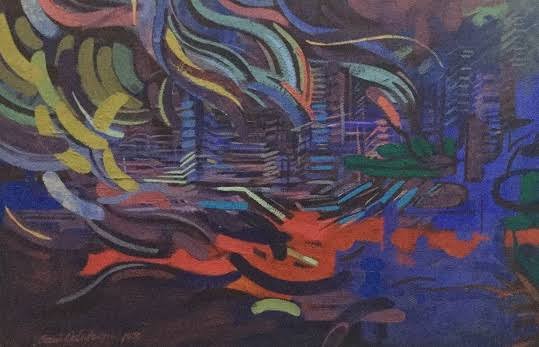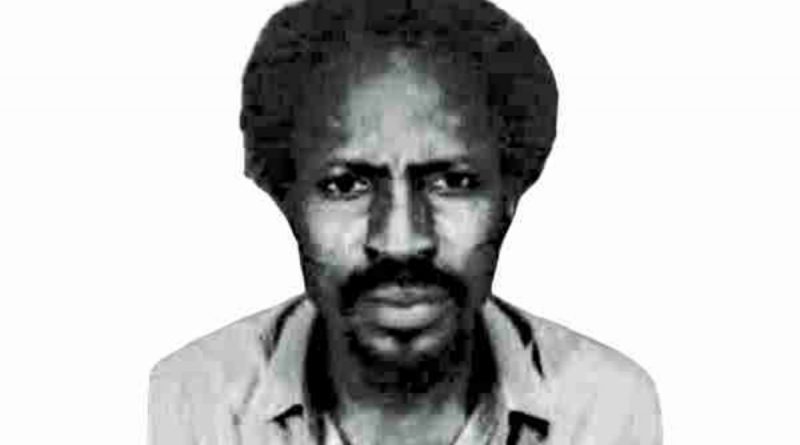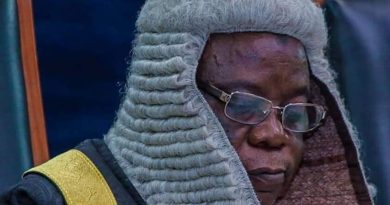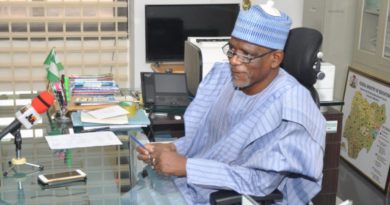Accident and Design: A Tribute to Gani Odutokun
By Nadir A. Nasidi
The 15th of February, 2020 marks 25 years of Gani Odutokun’s painful departure from this material world at a time when he was dearly needed not only by his family members, but also, the world of artistic creativity.
Born in Nsawan, Ghana, to Nigerian parents originally from Offa, Kwara State, Gani was an exceptional artist whose contributions to the field of visual art cannot be over-emphasized. He spent his early life in Ashanti after which his father came back to Nigeria, especially to continue his Cocoa trade.

Gani worked as a clerk with the Nigerian Breweries, but upon the motivation he received from his friends who saw his talent in the art, he applied for a degree programme at Ahmadu Bello University, Zaria in 1972 and graduated with a B.A and M.A degrees in Fine Art in 1975 and 1979 respectively.
For his performance, he was retained at his alma mater as a graduate assistant. According to Hynes, Gani’s artworks explore philosophical concepts about ‘accident and design’, fragments, and the ‘unbalanced balance equilibrium’.
Gani’s works do not only challenge the common notion of the West that African Art is ‘childish’ but also took some political undertones. A typical example of this was his work titled ‘The King Shares a Joke with his Generals’, which served as an allusion to the ostentatious liberalism of Babangida’s military regime. Another interesting work linking bridges across missing linkages was ‘A Dialogue with Mona Lisa’.
However, his work titled ‘the King, the Queen and the Republic’ composed in 1987 are unanimously considered, especially by art critics as one of his best oeuvres, probably due to its obvious but sympathetic emphasis on the socio-political narratives engulfing the Nigerian state.
From the wild, sweeping, lines of ‘The King, The Queen, and the Republic’, as a typical example of Gani’s famous liquidized painting technique, one would observe the artist’s critical, visual and satirical representation of the Nigerian military regimes rendered in a semi-cartoonish and abstract images, especially during General Ibrahim Babangida’s administration, which is projected by the Nigerian academic elites as ‘corrupt and retrogressive’.
ALSO READ: Tribute to Professor Aliyu Dikko Umar by Dr. Aliyu Tilde
Though I have a contrary view of Babangida’s regime, Gani’s sincerity of purpose, which is deeply rooted in his fascinating sense of nationalism was something recommendable.
Sincerely speaking, it pains me, as the wind of destiny did not bring me to A.B.U, when Gani was alive so as to have a close contact with him. Even if it did, I would not have understood him properly because of a lack of maturity at least if not intellectual, then biological.
However, I have learnt a lot from some of his students and associates like Dr. Lasisi Lamidi, Prof. Duniya Gambo, Dr. Ken Okoli, Prof. Jacob Jari, Prof. Toni Okpe, to mention a few.
Like his famous idea of accident and design, destiny has it that Gani would die in an accident in 1995 while returning from an Exhibition organized at Goethe Institute in Lagos. His sudden death had shocked not only the Nigerian artists, but the world at large.
Perhaps if Gani would come back, Elizabeth, his wife, would have said to him ‘Come drink your tea…the hot water is getting cold, the bright yellow label pack fading to ochre, the chair falling apart, the teacup covered with dust even your (Gani) stainless steel teapot is not without stain now’.
Deep inside the ears of my heart, I could hear Temidayo, his daughter, saying ‘Daddy please, I want a piece of paper’, whenever she feels the urge to draw, or paint so as to hear her daddy say ‘good, it’s nice’, or the remorseful and sombre voice of Niniola saying ‘When you were around it was always fun’.
In 2000, ‘Time No Boundaries’, an Exhibition with paintings from different artists mostly Gani’s students from Nigeria was organized by Brunei Gallery, which was held at the Maison de France.
Among the artists who exhibited their works were Mu’azu Mohammed Sani, Jacob Jari, Ayo Aina, and Lami Bature Nuhu (the only female), Babatunde Babalola, and Lasisi Lamidi.
Besides, in 2008, a memorial art exhibition by the Nigerian Gallery of Art in honor of Odutokun’s paintings was similarly held at the famous Aina Onabolu complex of the National Arts Theatre, Iganmu, Lagos.
To sum it up, Brunei Galley argued that ‘Gani Odutokun was one of the most talented and inspirational artists to come out of Nigeria in the 20th century.
His death meant the loss of one of Africa’s leading practitioners of the art.’ I, therefore, pray that may God in his intimate mercy give Gani’s family, his students, and admirers the fortitude to bear this great loss.
Nasidi is from the Department of Fine Art, Ahmadu Bello University, Zaria.
For Advert Placement, Sponsorship, support, Article submission, suggestion, etc, Contact us: info@theabusites.com, +2349015751816 (WhatsApp)








